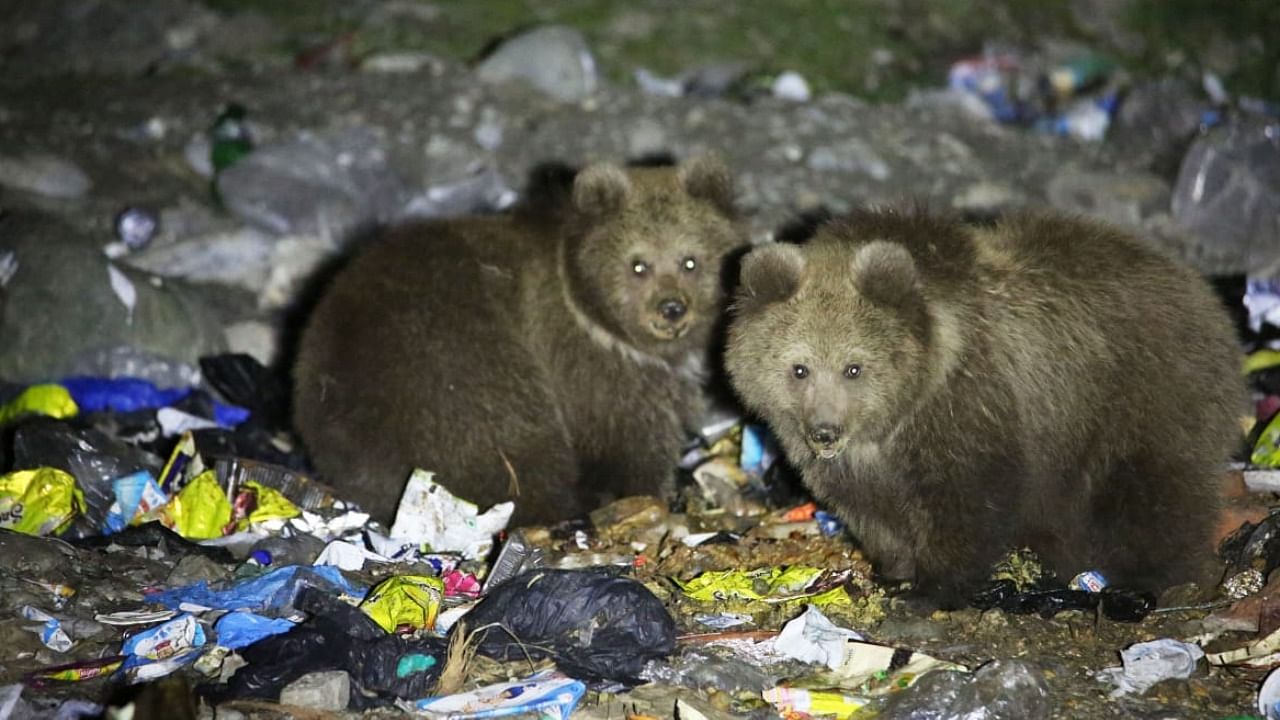
A study carried out by an India-based wildlife conservation organization has revealed that 75 per cent of food items in Himalayan brown bear’s diet in Kashmir was scavenged from garbage, which includes plastic, chocolates and Biryani.
The extensive survey on Himalayan brown bear distribution and feeding patterns was carried out from May to October 2021 by Wildlife SOS under the aegis of the Jammu & Kashmir Wildlife Protection department.
The diet of brown bears includes excreted plastic carry bags, milk powder, chocolate wrappers and biryani. “The Himalayan brown bear population in Kashmir has been a mystery for wildlife conservationists and researchers due to its restricted distribution in the alpine meadows of the Himalayas. Scant information exists about the brown bear and almost no research exists,” the study says.
“Threatened by habitat destruction due to various anthropogenic pressures such as habitat encroachment, tourism, and grazing pressure, the Himalayan brown bear population has been steadily declining in the past century with only an estimated 500-750 bears left in India,” it reads.
The Himalayan brown bears are listed as “critically endangered” on the IUCN Red List. “To help conserve these unique bears in Kashmir, Wildlife SOS conducted a survey in areas which included Thajwas (Baltal) Wildlife Sanctuary, Sonamarg, Laxpathri, Nilgrath and Sarbal villages since they are critical bear habitats and prime tourist destinations. Sonamarg in particular was chosen due to its role as a bear habitat extending up to the Zojila,” the study reveals.
The most riveting and desolating finding in the study is that the Himalayan brown bears are raiding garbage, and are rapidly becoming accustomed to this. “On studying 408 scat samples of brown bears, the team found out that 86 scats have excreted plastic carry bags, milk powder, and chocolate covers. Some scats even had remnants of glass! The frequency of occurrence of garbage was 75% higher than wild plant matter, crop raids, and hunted sheep,” the study reveals.
Aaliya Mir, Project Manager and Education Officer at Wildlife SOS said, “Due to the remote terrains they occupied, the Himalayan brown bear was a rare sight for the last two decades. Recently, however, Brown bears have increasingly come into the purview of humans as they venture into lower altitudes in search of food.”
“To study them, our team utilised field methodologies such as camera trapping and interviews of key stakeholders - locals, nomads, and army personnel. The Wildlife SOS research team even tracked animal footprints and scattering to get an in-depth understanding of bear behavior,” she said.